Even as the COVID – 19 pandemic applied breaks to ongoing research and innovation activities world-wide, there has been a satisfactory research outcome at IIITH that originally began brewing as an interdisciplinary experiment. Read On.
At the International Institute of Information Technology Hyderabad (IIITH), the emphasis has always been on dissolving boundaries – physical or mental – to acquiring knowledge. One way it achieves this is in the design of curriculum itself. For instance, though there are two academic programmes offering a Bachelors in Computer Science (CS) and one in Electronics and Communication Engineering (ECE) respectively, the goal has been to show how they are not water tight compartments. Even if students are majoring in one or the other, they are actively encouraged to opt for courses that straddle the two disciplines. “The fundamental point we wanted to make was that unlike their perception, there are no brick walls between domains and disciplines. Instead, there are fluid boundaries. To solve real societal problems, you really need to break the walls and think wholistically and multiple disciplines have to work together,” says Prof. Jayanthi Sivaswamy, Dean, Academic Affairs. While curriculum design itself may have led to a change in student perception and helped in fostering interdisciplinary academic pursuits, the latter is fraught with many challenges.
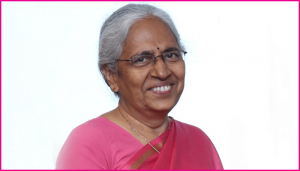
Interdisciplinary Challenges
According to Prof. C.V. Jawahar, Dean, Research & Development, traditional models of interdisciplinary research have always relied on students to bridge the gap between domains. “It is typically the student who runs between the two labs, collaborating with and linking the two. While this works upto a certain extent, we asked ourselves if we could do better than that,” he says. Hence when a research initiative that applied AI in the healthcare space was mooted early this year, the institute proactively stepped in to bring faculty and multiple students together as a single team. Faculty from various research centres were drawn such as Prof. C V Jawahar from the Centre for Visual Information Technology (CVIT), Dr. Deva Priyakumar and Dr. Vinod P. K from the Centre for Computational Natural Sciences and Bioinformatics (CCNSB), and Prof. Bapi Raju from Cognitive Sciences.
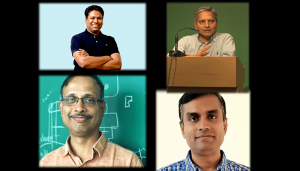
Unfortunately these efforts coincided with the Covid-19 outbreak temporarily derailing the momentum. Recognizing however that the Coronavirus is here for the long haul, like all other academic and research pursuits, the entire project transitioned to the online mode too. Students from across India who had already applied for various Summer internship positions with the faculty were shortlisted based on their resumes for this project. “We finally selected 10 of them, Akash Gupta, Anirudh Reddy, Anusha Chaturvedi, Kushal Borkar, Krishna Chandra, Yash Khare, Rishal Aggarwal, Viraj Bagal, Vivek Talwar, and Likith Reddy after conducting personal and technical interviews as well as a test. While 9 of them are from various other institutes, one of the students is a IIITH Dual Degree student,” explains Dr. Manasa K, project coordinator.
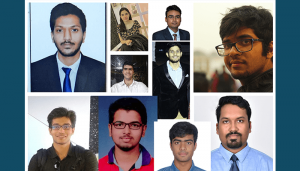
Disease Prediction To Drug Discovery
Illustrative of its interdisciplinary nature, the healthcare and AI (HAI) initiative runs 10 projects across a gamut of healthcare issues from automatic identification and characterization of kidney diseases to interpreting chest radiology images for diagnostics. There are also ongoing projects relevant for drug discovery such as the creation of an ML model that can predict the binding site from the 3D structure of proteins. A study that draws immediate attention due to its application to Covid-19 is the one on mutation prediction of viruses based on genomic sequences. “ We’re trying to achieve two things here: predict the potential mutation sequence of Covid-19 as well the host of Covid-19 using ML and deep learning techniques,” says Anusha Chaturvedi, who is working on this along with Kushal Borkar under the guidance of Dr. Deva Priya Kumar and Dr. Vinod P.K.
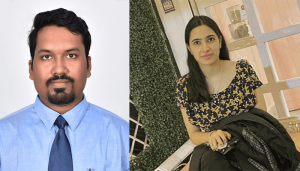
From the other research initiatives, two of them have resulted in scientific papers that are ready for publication. One of them pertains to an improved Visual Question Answering model (where the system infers answers from text-based questions) on medical images outperforming existing models. Another’s goal is to develop a computer-aided diagnostic tool that can detect and classify children on the autism spectrum. Other research studies that can enhance accuracy of disease diagnosis and prognosis involve deep learning models for classifying of various types of brain cancers, predicting the progression of pulmonary fibrosis and interpretation of abnormal ECG heart rates.
Unique Model
At a time when research was being put on the backburner due to the uncertainties brought forth by the pandemic, it is laudable that a joint effort of this kind was not only possible but successful. As a research model, Prof. C V Jawahar calls it unique for two reasons – the nature of collaboration itself and the virtual platform upon which it has been executed. “I’m very happy with the success of this kind of a virtual model. It’s working well. It does away with the shortcomings of the typical physical mode of research where one needs to expend a lot of energy to run machinery from getting keys to offices and labs, making sure there is power, projectors work, accounting for late walk-ins of stakeholders due to various reasons and so on,” he says. Plus, with a mix of experts in the fray, there’s a homogenous melting pot of ideas and inputs contributing to progress of the project.
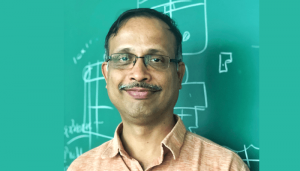
Dr. Deva agrees when he says, “The need for interdisciplinary or multidisciplinary research is something we all aspire for at the institute level, but it is far from easy. This initiative has brought together people who otherwise would not have worked together. We all learned so much more in this effort.”
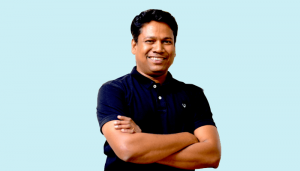
With the launch of an applied Artificial Intelligence research centre on campus called INAI in collaboration with Intel, the Telangana government, IIITH and the Public Health Foundation of India, Prof. Jawahar terms the in-house healthcare project as a ‘catalyst’. “This (HAI) is laying the foundation for much bigger things that we have in store with INAI. We plan on engaging with more faculty, and researchers from across the country. Collaborations with hospitals and other healthcare agencies too have been envisaged,” he says. For Prof. Bapi Raju, the intervention of AI in the delivery of healthcare will see the unburdening of tertiary healthcare systems through the usage of assistive technologies for disease diagnosis. “While we’re not addressing this immediately in the HAI, the possibilities indeed exist,” he remarks.
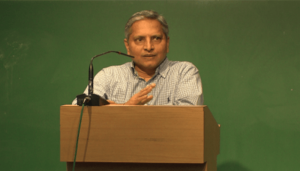
Things Come Together
They say, in life timing is everything. Much of the project’s success can be attributed to adaption to the virtual world at the right time. “It was a fitting thing to do at the beginning of the pandemic. And this activity brought the right kind of people together especially when things were otherwise not going so well in terms of Covid-19,” says Dr. Vinod, adding that the quality of the students involved in the project too made all the difference. “Everybody was impressed with the CVs of the students. They have been top-notch. So in that sense, bringing in the right set of students too is helping this program,” he says.
With students spread out over various geographic locations and additionally assigned to work in pairs on each project, there were initial apprehensions of student dynamics playing out virtually. Hence for the express purpose of encouraging student bonding, many initial meetings were scheduled between them in the absence of faculty. Over the period of over six months, they now collaborate, discuss and seamlessly share ideas. The seamless integration of the team can be credited to Dr. Manasa who is not only instrumental in cobbling it together but also thanks to her background in healthcare, has proven to be the vital link between the students and faculty. “This made the research simple for both faculty and students since they had to focus only on the core technical stuff,” says Prof. Jawahar.
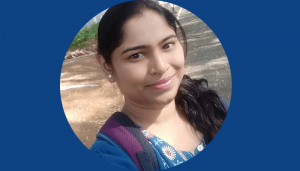
A Different Experience
One of the interns, Kushal Borkar, a graduate from IIIT Sri City, Chittoor with a BTech (Hons) in Electronics and Communication says he’s developed a passion for deep learning and computer vision thanks to the project. “I’m especially intrigued by its research prospects in healthcare”, he says.
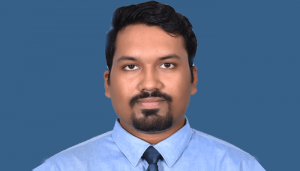
Twenty two year old Viraj Bagal will graduate from the Indian Institute of Science Education and Research (IISER) Pune in 2021. He was all set to pursue his Masters in Physics until this internship opportunity came along. “It has changed my career path and resolved my misunderstanding that one needs a CS background for research in AI. I thought I would have no chance to carry out cutting-edge research due to my Physics background. HAI has indeed been a silver lining in that sense,” he says. Most of the interns found obtaining medical domain-specific information a bit of a challenge which they however overcame with the help of peer-reading group sessions and tutorial talks that were conducted on a regular basis.
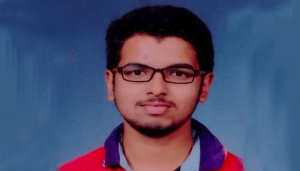
Small Step
As with all academic progress, the cumulative knowledge generation here has facilitated and initiated scientific research writing which will soon be published in academic journals. As proof of their calibre and interests, 5 out of the set of bright and dedicated interns – Rishal Aggarwal, Krishna Prasad, Kushal Borkar, Vivek Talwar and Yash Khare – have been selected formally for a Masters in Research programme at IIITH. “We don’t want to do one project but many big projects over the next 2 years. This is just the starting point,” signs off Prof. Jawahar.
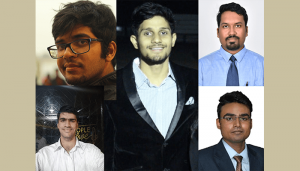

Sarita Chebbi is a compulsive early riser. Devourer of all news. Kettlebell enthusiast. Nit-picker of the written word especially when it’s not her own.

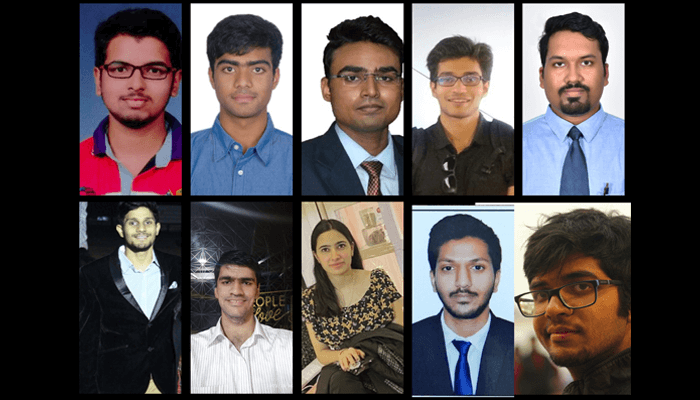
Next post